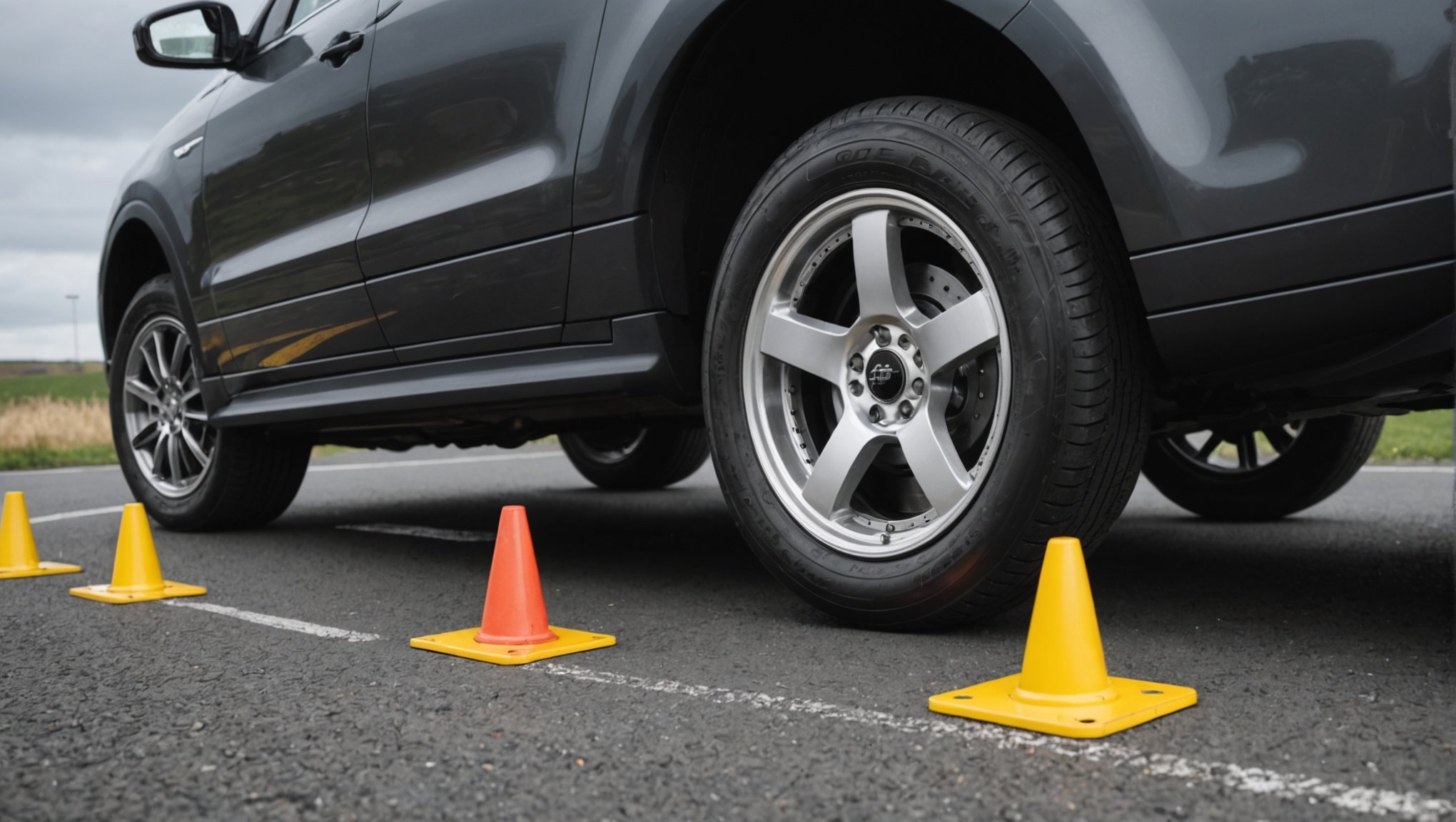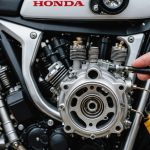Camber angle significantly influences cornering performance in UK vehicles, shaping how your car handles turns and maintains stability. This guide demystifies camber angle adjustments, exploring optimal settings for different driving conditions. Whether you’re a motorsport enthusiast or a daily driver, understanding camber can enhance your vehicle’s grip and responsiveness. Discover practical tips and expert insights to master your camber angle, transforming your driving experience and unlocking the full potential of your car.
Understanding Camber Angle
Camber angle is a critical aspect of a vehicle’s suspension geometry that significantly influences vehicle handling. It refers to the tilt of the wheels in relation to the vertical axis when viewed from the front or rear of the vehicle. This angle is crucial in determining how well a vehicle will grip the road, especially during turns.
Also to discover : How often should you change the oil in a diesel car in the UK?
There are three primary types of camber angles: positive, negative, and zero. Positive camber occurs when the top of the wheel leans outward, away from the vehicle’s body. This setup is often used in off-road vehicles to enhance stability on uneven terrain. On the other hand, negative camber means the top of the wheel tilts inward, towards the vehicle. This configuration improves cornering performance by increasing the tire’s contact patch during turns. Zero camber indicates that the wheel is perfectly vertical, which is ideal for even tire wear and straightforward driving conditions.
The impact of camber on tire wear is substantial. Incorrect camber settings can lead to uneven tire wear, reducing tire life. Additionally, the right camber angle enhances vehicle stability, providing better control and safety. Understanding and adjusting camber angle appropriately is essential for optimal vehicle performance.
Also read : Step-by-Step Guide to Safely Replace and Dispose of Your Car Battery in the UK
The Science Behind Cornering Performance
Understanding cornering performance involves delving into the intricate relationship between camber angle and vehicle dynamics. Camber angle plays a pivotal role in enhancing a vehicle’s handling characteristics. When a vehicle enters a turn, the camber angle ensures optimal tire contact with the road, significantly affecting grip and stability. A negative camber angle, for instance, increases the tire’s contact patch during a turn, thereby improving cornering grip.
The interplay between camber and steering response is crucial. A well-adjusted camber angle can lead to precise steering, as it affects how the tires interact with the road surface during a turn. This interaction is vital for maintaining control and ensuring the vehicle responds accurately to steering inputs.
In racing scenarios, camber adjustments are meticulously calculated to optimise cornering performance. For example, in Formula 1, engineers tweak camber angles to achieve the perfect balance between speed and stability. The right camber setup can mean the difference between winning and losing, as it directly impacts how effectively a car can navigate tight corners at high speeds. These real-world applications underscore the importance of understanding and utilising camber angle for superior handling.
Practical Tips for Adjusting Camber Angle
Fine-tuning your vehicle’s camber angle can greatly enhance handling and tire longevity. Whether you’re into DIY vehicle maintenance or just looking to optimise your ride, understanding the process is crucial.
Step-by-Step Guide to Measuring and Adjusting Camber Angle
- Measure the Current Camber: Use a camber gauge or an alignment tool to determine the current angle. Ensure the vehicle is on a level surface for accurate readings.
- Loosen Suspension Components: Carefully loosen the bolts on the suspension system. This allows for the necessary adjustments to be made.
- Adjust Camber Angle: Use a wrench to adjust the control arms or camber bolts. Adjust in small increments to avoid over-correction.
- Re-check the Camber: After adjustments, measure again to ensure the desired angle is achieved.
Recommended Tools for Camber Adjustment
- Camber Gauge: Essential for precise measurements.
- Wrench Set: For loosening and tightening bolts.
- Alignment Tool: Useful for overall suspension tuning.
Safety Precautions
- Always ensure the vehicle is securely lifted.
- Wear protective gear, such as gloves and goggles.
- Double-check all components are tightened post-adjustment to prevent accidents.
Camber Angle Optimization for UK Vehicles
Optimising the camber angle for UK vehicles is essential to enhance both performance and safety. Given the diverse road conditions in the UK, from urban streets to winding countryside roads, specific recommendations are crucial.
Common Camber Settings for Popular UK Car Models
For popular UK models like the Ford Fiesta and Vauxhall Corsa, a slight negative camber is often recommended. This setting improves cornering performance, which is beneficial for navigating the UK’s frequently curvy roads. Meanwhile, vehicles like the Land Rover Defender, used in rural areas, may benefit from a positive camber to enhance stability on uneven terrain.
Case Studies of Successful Camber Adjustments
A notable case involves a BMW 3 Series owner who adjusted the camber to -1.5 degrees. This change improved handling during spirited driving on winding roads without compromising tire wear. Such examples highlight the impact of precise adjustments on performance tuning.
Factors to Consider Based on Driving Conditions in the UK
When tuning camber angles, consider factors like typical weather conditions and road types. Wet and slippery roads, common in the UK, may require adjustments for better grip. Additionally, urban drivers might prioritise even tire wear, while those in rural areas focus on stability and traction.
Benefits of Optimizing Camber Angle
Optimising the camber angle offers numerous performance benefits for any vehicle. One of the most significant advantages is the handling improvement it provides. By ensuring optimal tire contact with the road, drivers experience enhanced cornering performance and stability, especially during high-speed maneuvers. This improved grip allows for more precise steering, giving drivers increased confidence and control over their vehicles.
Another crucial benefit of a well-adjusted camber angle is tire longevity. Proper camber settings reduce uneven tire wear, which can significantly cut down on maintenance costs over time. By minimising the wear on tire edges, drivers can extend the life of their tires, avoiding frequent replacements and associated expenses.
Moreover, optimising camber angle contributes to increased driver confidence. Knowing that the vehicle will respond accurately to steering inputs and maintain stability through turns allows drivers to focus on the road ahead. This assurance is particularly beneficial in challenging driving conditions, where precise handling is essential for safety.
In summary, adjusting the camber angle not only enhances vehicle performance but also provides practical benefits such as reduced tire wear and improved driver confidence.
Tools and Techniques for Monitoring Camber
Monitoring camber angle is vital for maintaining optimal vehicle performance. Employing the right camber measurement tools and diagnostic equipment ensures precision and accuracy.
Essential Tools for Measuring Camber Angle
- Camber Gauge: This is a fundamental tool for measuring the camber angle accurately. It provides readings that help in making necessary adjustments.
- Alignment Tool: Used to assess the overall suspension setup, ensuring all components are in harmony.
- Digital Inclinometer: Offers precise measurements of the wheel’s tilt, crucial for performance analysis.
Techniques for Assessing Camber
Monitoring camber involves both static and dynamic assessments. Static assessment is performed when the vehicle is stationary, using tools like camber gauges to get baseline measurements. Dynamic assessment involves observing the camber angle during actual driving conditions, which is crucial for understanding how the camber behaves under different loads and speeds.
Importance of Regular Monitoring
Regular monitoring and adjustments of the camber angle are crucial. They ensure that the vehicle maintains optimal handling and tire longevity. Neglecting this can lead to uneven tire wear and compromised vehicle stability. By using the appropriate tools and techniques, drivers can ensure their vehicle performs at its best.
Expert Recommendations and Resources
Delving into the world of camber angle adjustments can be daunting, but leveraging expert advice can simplify the process. Automotive engineers and performance specialists offer invaluable insights into achieving optimal vehicle handling. Their expertise is often shared through automotive resources like technical manuals and online articles, providing a solid foundation for understanding complex concepts.
For those eager to deepen their knowledge, several recommended readings are available. Books authored by industry professionals offer comprehensive guides on suspension geometry and its impact on vehicle dynamics. Online platforms such as automotive blogs and educational websites also provide up-to-date information and practical tips.
Engaging with community forums and groups is another effective way to gain knowledge. These platforms allow enthusiasts to share experiences, exchange tips, and discuss challenges related to camber adjustments. Participating in these discussions can provide real-world insights and solutions that are not always covered in traditional resources.
By combining expert advice, recommended readings, and active participation in community forums, individuals can enhance their understanding of camber angle adjustments. This holistic approach not only builds confidence but also empowers vehicle owners to make informed decisions for improved performance and safety.
















